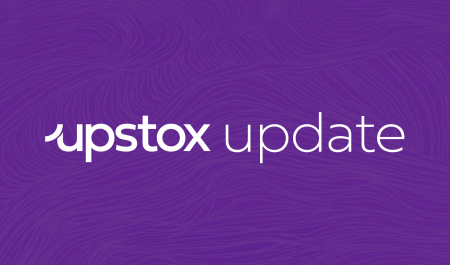Back in 2019, we had 16 companies that went public. At the time of publishing this article, we’re in September 2020, and we have seen just three initial public offers (IPOs) so far. Some of 2020’s major IPOs were postponed or even cancelled owing to the nationwide lockdown. However, there now seems to be some momentum with the economy opening up.
At the time of publishing this, Happiest Minds Technologies closed its public offer after being oversubscribed a whopping 151 times, while Route Mobile has just launched its IPO. We tell you all you need to know about these and other IPOs that are expected this year.
Route Mobile
What is it?
Founded in 2004, Route Mobile provides technology solutions to enterprises in predominantly three domains. These include the following:
a) Cloud-communication platform as a service (“CPaaS”) to enterprises
b) Services related to mobile network operators (“MNOs”) such as Instant Virtual Number or IVN voice calls (the kind you get when your Zomato order arrives), OTP/automated SMS services, SMS analytics
c) Business process outsourcing (BPO) services
The company claims to serve some of the world’s largest and well-known organisations, including a number of Fortune Global 500 companies. Capital raised via the IPO will be used to settle debts, make strategic acquisitions, purchase office premises in Mumbai, and for general corporate purposes.
Why the buzz?
First, the Route Mobile IPO will come right on the heels of the Happiest Minds IPO. Second, and crucially, its revenues have consistently grown; ₹464.8 crore in FY17, ₹509.4 crore in FY18, ₹852.3 crore in FY19,and ₹968.1crore in FY20. Its revenues stood at ₹312.2 crore at the end of June 2020.
How big is it?
Promoters Rajdipkumar Gupta and Sandipkumar Gupta aim to raise ₹600 crore through this IPO. Of this, ₹240 crore will amount to a fresh issue, while the remaining ₹360 crore will be an offer for sale (OFS), through which the promoters plan to cut down their stake in the venture from 96% to 66.33%.
The price band for IPO is kept at ₹345–350, with 40 shares per lot (a total of ₹14,000/lot). Distribution of shares stands at 50% for QIBs, 15% for non-institutional investors, and 35% for retail investors. You can subscribe for Route Mobile’s public offer from 9 to 11 September 2020. Click here to subscribe to this IPO.
UTI Asset Management Company*
What is it?
You’re looking at the oldest asset-management company (AMC) in the country. As per CRISIL, the rating agency, it is the largest AMC in India when it comes to total assets under management (AUM), and the seventh-largest in terms of mutual fund quarterly average AUM. (Figures as of 30 September 2019).
Why the buzz?
A growing investor base, economic growth, rising investable household surpluses, and a shift from fixed-income instruments (think fixed and recurring deposits) are expected to translate into a growing mutual fund industry. In fact, CRISIL pegs growth in mutual fund space at a CAGR of 17–19% between 30 September 2019 and 31 March 2024, which bodes well for asset management companies.
As per the company’s draft red herring prospectus, its income from management fees for the financial years 2017, 2018, and 2019 was ₹820 crore, ₹940 crore, and ₹880 crore, respectively. The revenues represented 81.5%, 80.4% and 78.4%, respectively, of their total consolidated income for the stated periods.
UTI AMC will be the third AMC to list on our exchanges. The previous public offers in this segment include HDFC AMC and Nippon AMC, which have returned profits to the tune of 120% and 9.2%, respectively.
How big is it?
Expect the company’s maiden public offer to be in the ballpark of ₹3,800 crore. In comparison, the IPOs of HDFC AMC (2017) and Nippon Life AMC (2018) stood at ₹2,800 crore and ₹1,540 crore, respectively.
Computer Age Management Services (CAMS)*
What is it?
In India, there are five mutual fund registrar and transfer agents that register, record, reconcile, and process, and compute brokerage for every single transaction that mutual funds make. Computer Age Management Services Limited (CAMS) is the largest of them. Among the top five AMCs, it services HDFC Mutual Fund, ICICI Prudential Mutual Fund, SBI Mutual Fund and Aditya Birla Sun Life Mutual Fund. In fact, as of November 2019, CAMs had a 69% market share in terms of mutual fund average AUM.
Why the buzz?
During FY19, revenues of the company stood at ₹6,936, while it claims to have grown at 20.4% CAGR during 2016–19. CAMS also came into the news for having the National Stock Exchange (NSE) as a 37% shareholder. The Exchange has faced flak from Sebi for not seeking the market regulator’s permission to acquire a stake in CAMS in 2013. It has decided to sell 12.5% of its 37% stake in the proposed IPO.
How big is it?
With the IPO, CAMS is expected to raise ₹1,500–1,600 crore. Its existing shareholders will sell about 1.22 crore shares. Of this, NSE will sell around 60 lakh shares, while Warburg Pincus will sell 40 lakh shares.
Equitas Small Finance Bank*
What is it?
On 27 November 2014, the RBI released guidelines for a new class of banking entity, ‘small finance banks’ or SFBs, to cater to the diverse needs of the low income group. The objective of SFBs is to extend banking services to the underserved and unserved population through savings instruments, and to provide credit to small business units, small and marginal farmers, and other unorganized sectors.
According to CRISIL report, as of FY19, the top three of India’s 10 SFBs account for 64% of the market share in terms of AUM. At 16% market share, Equitas is one among the top three. AU Finance and Ujjivan capture 33% and 15% respectively.
Why the buzz?
Equitas SFB was among the IPOs that got deferred due to the COVID-19 crisis. The bank had clearance to go public on 3 March 2020, but the management decided against listing citing market volatility. The company’s revenues have been on a consistent uptrend in the past three years. Total earnings stood at ₹1,556.5 crore, 1,787.4 crore, and ₹2,358.5 crore in FY17, FY18, and FY19, respectively, while profits stood at ₹159.3 crore ₹31.3 crore ₹176.5 crore, respectively.
How big is it?
The SFB aims to raise an estimated ₹550 crore through the IPO, and list with 8 crore shares.
Life Insurance Corporation*
What is it?
It’s the company that’s synonymous with the word ‘insurance’ in the country. And why not, it is after all the largest life insurer in the country. As of December 2019, LIC’s market share in terms of premiums collected stands a little over 70%. Furthermore, it’s also the country’s largest institutional investor, with investments adding up to ₹5.40 lakh crore as of June 2020.
Why the buzz?
The LIC IPO first made news during the 2020 Union Budget. Finance Minister Nirmala Sitharaman announced plans of the government divesting its holding in the company stating that listing a company helps ‘unlock’ its value. At under 4%, insurance penetration in India remains among the lowest in the world. This, of course, points to an immense scope for business expansion, especially in post-pandemic India.
Furthermore, two relatively recent life insurance IPOs, namely HDFC life insurance and SBI Life Insurance have fared positively. As of September 2020, they have grown by 98% and 19% since listing in 2017, respectively. This may also contribute to the excitement around LIC going public. Crucially, it’s estimated to be the largest public offering in the country till date.
How big is it?
The government is currently the sole owner of LIC, which has an estimated valuation of 8-10 lakh crore. At a likely 8-10% divestment, you’re looking at a ₹80,000 crore IPO. Official dates, price band, or even the size of the IPO aren’t out. However, we’ll keep you posted on the latest updates on LIC’s listing.
The Route Mobile IPO is live on Upstox till 11 September. Click here to apply.
*Details such as price band, issue date, number of shares, and share-holding pattern after listing are yet to be announced.
Disclaimer: Investments in the securities market are subject to market risk, please read all the related documents before investing.
The above article is purely academic in nature to educate about basic trading concepts & should not be construed as any opinion or advice to invest or deal based on it.


